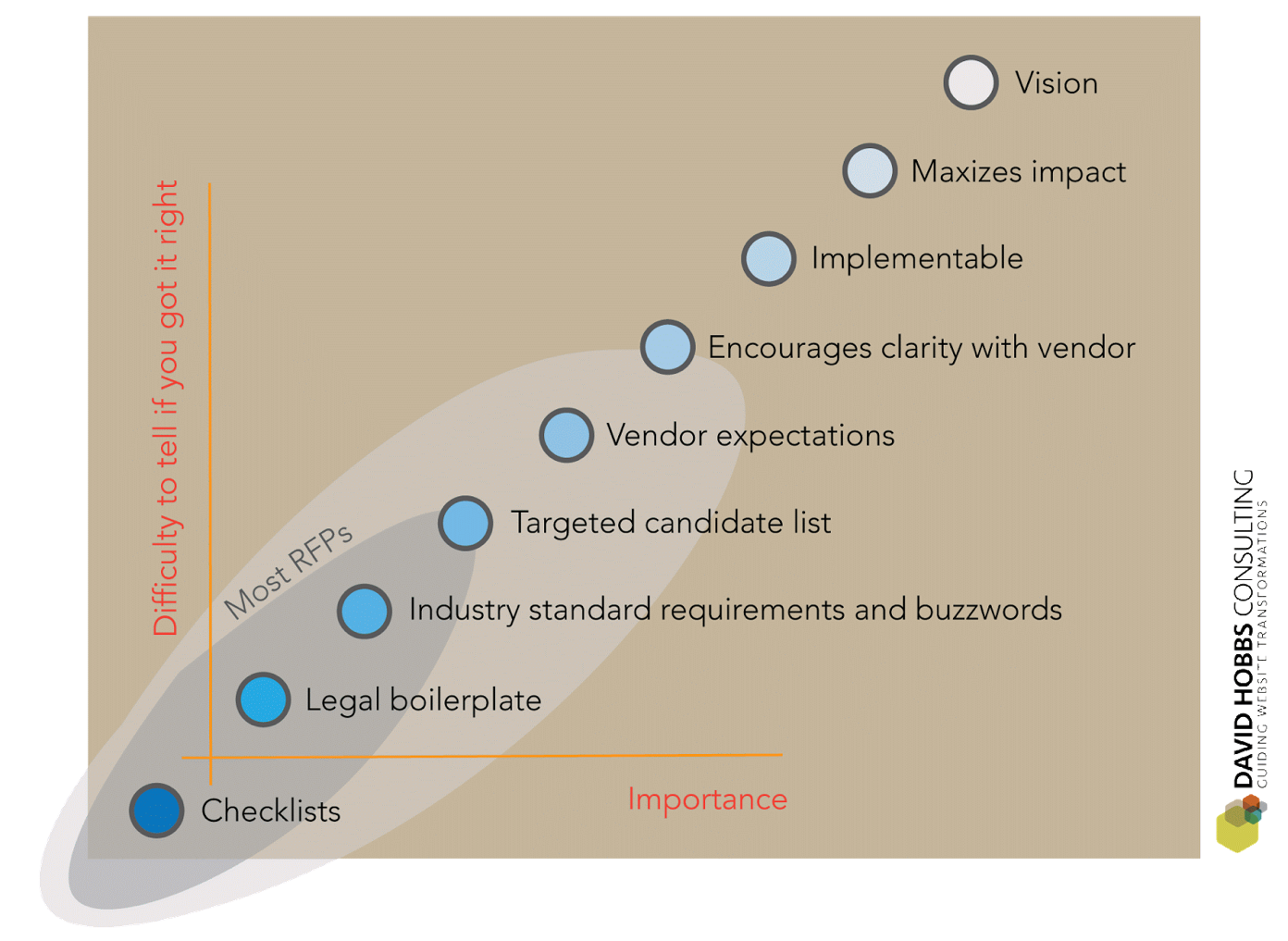Key Points
- A clear vision, attempting to maximize impact, and ensuring the RFP is implementable are key.
- Don't submit RFPs with diffuse laundry lists of requests.
Most RFPs are atrocious
Most RFPs are pretty terrible. Your potential partners know this since they see so many that they are forced to respond to. Three of the most problematic issues are:
Completely unrealistic expectations. Note that this can cut both ways: 1) things that are not possible to implement in the first place and 2) items that you would not be able to support either in initial rollout or ongoing operational support. Often this can be due to inconsistencies within the RFP.
Diffuse laundry lists. A common approach is to go and ask a wide range of stakeholders about the problems they have with the current system, and then simply taking that and putting this as a list in the RFP. But these laundry lists do not get at the focus of what you are really attempting to accomplish.
Low impact. Frequently the team just assumes a narrow scope in the approach, for instance concentrating on glitzy changes over just the main site rather than making a move toward more coherence over a dispersed digital presence. This means that high impact opportunities never even have a chance from the start.
Put another way, most RFPs have the uncomfortable combination of both not really being clear about what you want big picture yet being very specific about lots of little things that don’t really matter. Note that this also means that potential partners may be forced to cherry pick responding in detail to those aspects they most understand (or that they know how to implement) only to ignore what needs to happen to accomplish your business goals.
Perhaps this would be an option for very small requests and if what are requesting is exactly what your partner has implemented in the past. But most of the time, when looking at big changes, the commitment is high enough that evaluating multiple bids makes sense.
Higher impact RFPs
Higher impact RFPs define a strong vision, are defined in a way to maximize impact, are implementable, encourage clarity with the vendor, set expectations of what the vendor’s responsibilities are, is sent to a targeted content list, and then of course lists industry standard requirements (such as being responsive) and any legal requirements. They do not rely heavily (if at all) on checklists.

Perhaps the three most important aspects (that are also difficult to get right) are:
Vision. The vision is what grounds the entire RFP, so that the potential vendors can see what your overall goals are and they can view the entire RFP through that lens.
Maximizes impact. It’s relatively easy to innovate on a small scale, such as yet another microsite. But this would overlook the possibility to make broader and longer term impact. The RFP should be asking to maximize impact while reducing risk within your budget.
Implementable. Aside from having an overall sense of whether your implementation vendors will be able to implement the scope in the RFP, an even more important element is whether you will have the institutional will and resources to implement and maintain it. This is crucial both for the project overall and to inspire confidence in your potential vendors.
Selecting your implementation partner isn’t a game. You are looking for the best fit and this is a balance of variety of factors, not an average score with false precision.